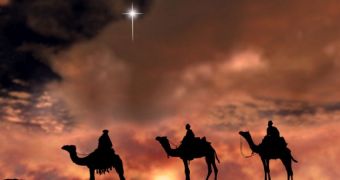The imminence of Christmas turns scientists, as always, towards the more mystique side of the research fields. Although not the first one to do this, a study by David Reneke, news editor of Australia's Sky and Space Magazine, focused on the biblical myth of the Christmas star, the one that the three wise men prophesized to have announced the birth of the Messiah. Moreover, Reneke's search did not turn out empty-handed.
He started his study by pinpointing the date of Jesus Christ, as described in the bible, and he found related clues in the first of Matthew's four gospels, comprised in the New Testament. "It's generally accepted by most researchers that Christ was born between 3 BC and 1 AD," the editor explained, as cited by Universe Today. Following this idea, and largely aided by modern astronomical techniques and software, Reneke found an accurate model of the sky, as it looked two millennia ago.
"We found out something startling." Reneke shared. "It looks like the 'Christmas star' really did exist." Knowing the approximate date and taking into account the premises that such a bright cosmic event would not be reserved for the eyes of the observers from the Middle East, he started looking for such phenomena occurring within the estimated time interval."Like the final pieces of a difficult jig-saw puzzle, our fabled biblical beacon is starting to reveal itself," Reneke said.
"On 12 August, 3 BC, Jupiter and Venus appeared very close together just before sunrise, appearing as bright morning 'stars.' It would have been visible in the eastern dawn sky of the Middle East from about 3:45 to 5:20am." More than that, only 10 months later, the same planets joined forces again in the Leo constellation, forming together what appeared to be a single, brilliant star, easily observable with the unaided eye.
Furthermore, by also considering the astrological interpretation of Jupiter as the "planet of Kings," we may be on to something. "Now, this doesn't mean that astrology works," Reneke concluded. "We haven't ruled out other possibilities for the Star of Bethlehem but it does make our search more rewarding to find a truly interesting astronomical event that happened during the most likely time for the Nativity."

 14 DAY TRIAL //
14 DAY TRIAL //